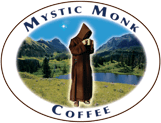Your Cart is Empty
I’m very pleased with the flavor and the aroma. My guests tell me I make such good coffee; they don’t need cream. On line service is excellent
This is my brother's favorite coffee! I ordered it for him for an Easter gift. I knew it would be a hit. Easy gift giving!
I am not a coffee drinker, but my husband is. He loved, loved the Irish Cream. He told me it was so good, he didn’t need coffee cream!
Love this coffee. I can smell the cinnamon as soon as I pour my cup. I order so many extra bags for my husband and myself. I wish I could put it on subscription! But it’s not available.




